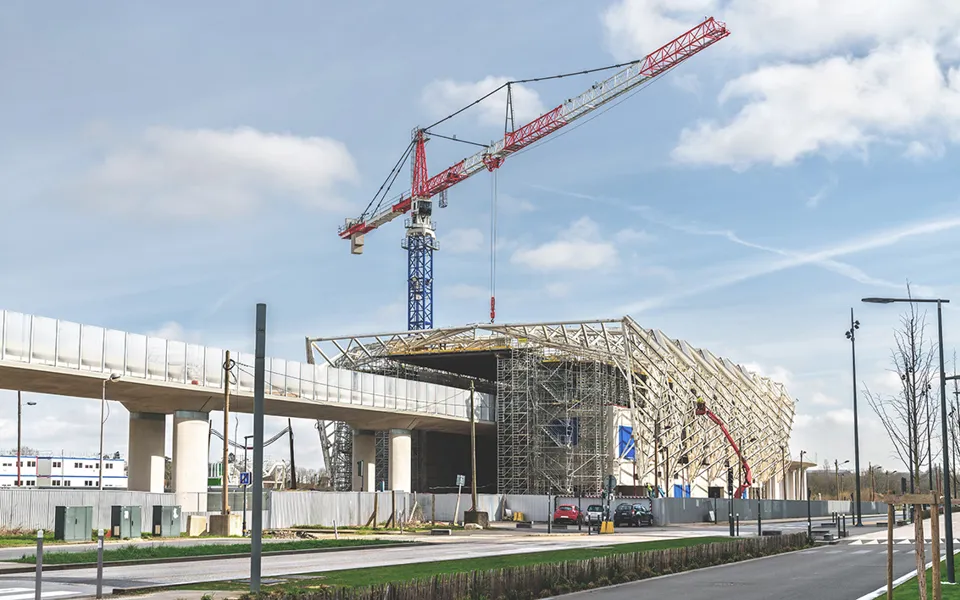
Ricardo delivers energy usage calculations on forthcoming Paris Metro routes
23 Jul 2024
Ricardo has produced the energy usage estimates for rail operations on three forthcoming lines on the Paris Metro, allowing the Public Transport Operator, Keolis, to anticipate future operating costs and identify opportunities for efficiencies.
Lines 16, 17 and 18 will form part of Grand Paris Express, a new network of rapid transit routes encircling the French capital allowing passengers to travel from suburb to suburb without having to pass through the central district.
Line 16 will serve ten new stations on a 27km route through Paris’ eastern neighbourhoods; Line 17 will extend for 16km to the northeast of the city, serving nine stations including Charles De Gaulle airport; and Line 18 will feature 10 stations on a 33 km route from Aéroport d’Orly to Versailles-Chantiers.
Routes 16 and 17 will also connect to Saint-Denis–Pleyel station, near to the Stade de France, which opened in June 2024 in readiness for the Summer Olympic Games and Paralympics. Thereafter, it will act as a major interchange on the Grand Paris Express network.
Energy calculations
During the competitive process to select the concession holder for Lines 16, 17 and 18, public transport operator Keolis sought to include accurate energy usage calculations within their submission, and also highlight where they could introduce energy efficiency measures without impacting on service levels.
Ricardo’s team was then appointed by Keolis to produce the calculations that would extend across not only the traction energy (with both lines operating on a 1500Vdc network), but also subsystems such as the onboard heating, lighting, ventilation and cooling.
According to Johan van der Werf, Ricardo’s Principal Technical Consultant, the calculations had to take into account a wide range of factors specific to each route, from the fluctuations in passenger numbers throughout the day, to the impact of slopes, curves and tunnels.
“To begin our assessments, we developed a digital model of each line, simulating the infrastructure and driving profile of the routes”, said Johan.
“That helped us to calculate the energy use between two stops, assessing likely acceleration and braking movements, for example, as well as the energy used at dwell points when the vehicle is standing still".
“The work is partly based on previous energy use calculations we have performed for Dutch operators. Indeed, over the years, we have developed robust methodologies for modelling the interactions between rolling stock, infrastructure and control systems. But it's never just a case of repeating past assignments. Each line has a unique operational environment with: speed profiles, slopes, tunnels, etc.."
The project was also an opportunity to provide projections on how energy usage could be managed by Keolis during daily operations. “Our models allow us to test a range of variables. For example, by comparing different timetables we could pinpoint where efficient driving techniques could contribute towards reduced energy use. These might include coasting (where the train shuts off traction as it approaches the station to reach it with reduced energy loss through braking) or marking locations on the route where speed limits could be used without impacting on service capacity".
Experience adds value
"The value we bring lies in our experience of taking into account the multiple factors that can distort the accuracy of the calculations," says Johan.
"It’s a complex task. But our calculations are based on the deep knowledge of rolling stock and energy consumption that we have assembled over several decades. We know which parameters from rolling stock, infrastructure and operation influence energy consumption, and where certain measures can secure energy efficiencies.”
Île-de-France Mobilités subsequently awarded Keolis the contract to operate metro lines 16, 17 and 18, with passenger services anticipated to start on the lines in 2026.
The seven-year contract for lines 16 and 17 also includes the operation of Saint-Denis Pleyel station which, from summer 2024, will play an integral role in the 2024 Olympics and Paralympics, serving both the main athletics and aquatic centres and the athletes’ Olympic Village.





 Follow Ricardo plc for regular updates
Follow Ricardo plc for regular updates




